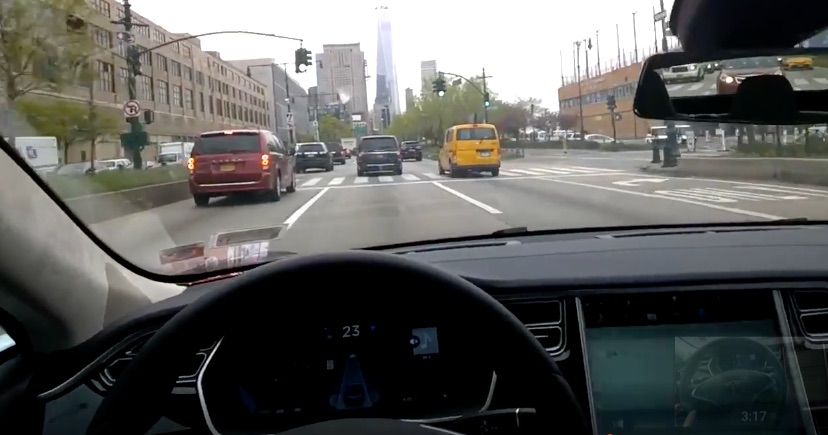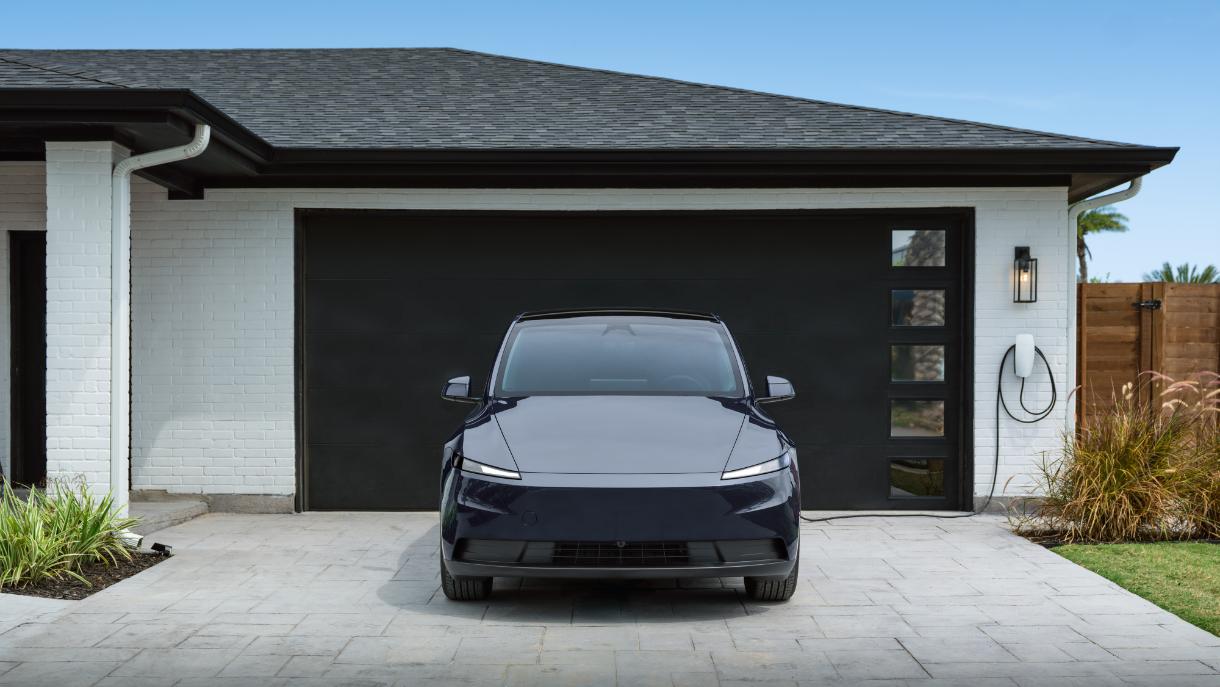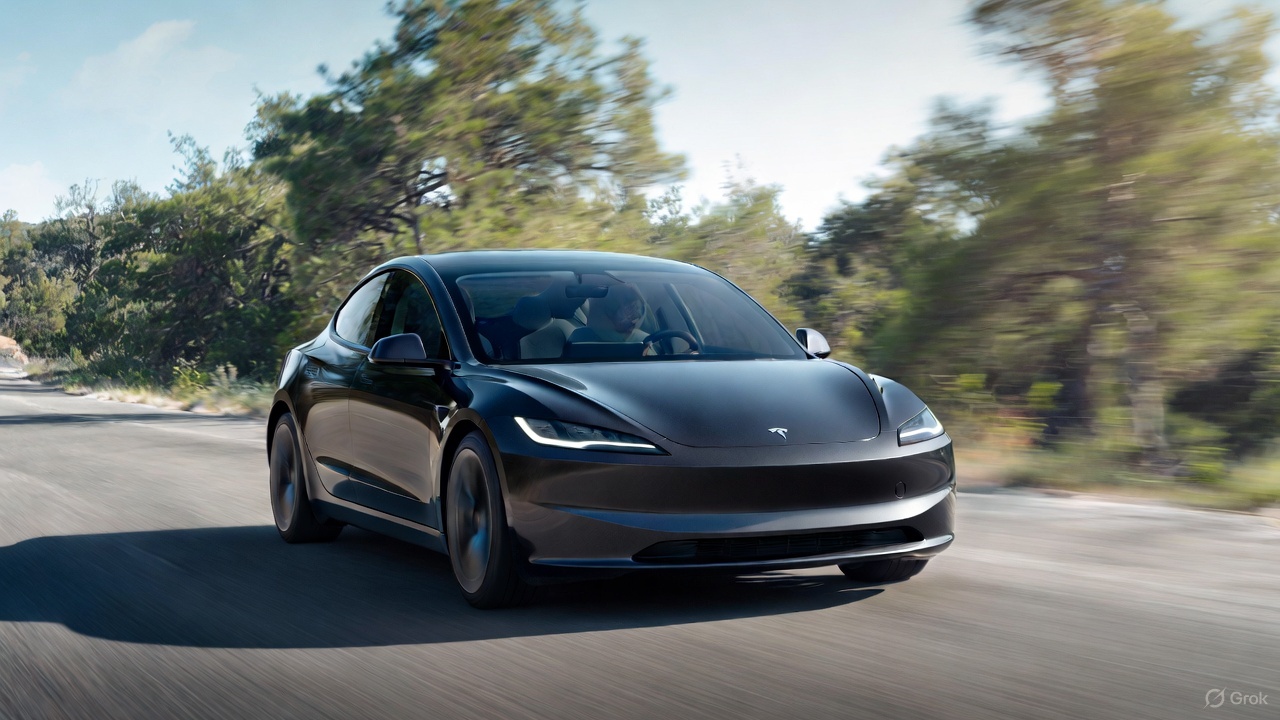News
Former New York mayor rallies cities to prepare for self-driving cars

Former New York Mayor Michael Bloomberg wants cities to be ready for autonomous vehicles. Using a data-driven approach, Bloomberg is developing a set of policy recommendations that will spell out social, environmental, and economic adjustments that cities will need to make in order to accommodate a generation of autonomous vehicles.
Austin, Los Angeles, Nashville, Buenos Aires, and Paris will be pilot cities and join in the earliest conversations. He’ll add five more cities to the list before the year is out.
“The advent of autonomous cars is one of the most exciting developments ever to happen to cities,” the three-term mayor said. “And if mayors collaborate with one another, and with partners in the private sector, they can improve people’s lives in ways we can only imagine today.”
Despite Tesla’s recent announcement that all its vehicles produced after October 10, 2016 will have the hardware needed for Full Self-driving, most cities have not begun to anticipate the effects of autonomous driving on their infrastructures. Bloomberg’s initiative may help cities and urban planners in particular to better understand how to maintain roads, train workers, design institutions, and plan land usage to accommodate what seems likely to be quickly expanding autonomous vehicle use in cities. Much speculation exists about the impact that autonomous vehicles may have on urban areas.
Carlo Ratti, Director of MIT Senseable City Lab said, “Vast areas of urban land currently occupied by parking lots and roads could be reinvented for a whole new spectrum of social functions.” Audi Urban Futures Initiative’s Lisa Futing adds, “The biggest change to the urban fabric will be to parking infrastructure. Parking will be moved indoors and outside of city centers, freeing up outdoor lots and spaces for development and public space.”
Anthony Townsend, author of Smart Cities: Big Data, Civic Hackers, and the Quest for a New Utopia, thinks attention should be devoted to all autonomous vehicles, not just cars. “It’s actually trash trucks, trailers, delivery vans, taxis, and other vehicles that take up much of the space in cities. They will be completely transformed by automated technologies.” Townsend argues that those changes plus autonomous mass transit will make cities more efficient and livable.
Colin Nagy outlined in The Guardian how transportation as an efficient and harmonious utility could become seamless due to an interface between autonomous vehicles and public transport. He offered a vision in which “we’ll see safer places where no one dies from unnecessary accidents, and we’ll see the things we love about cities get better because public spaces will be opened up.”
Bloomberg’s philanthropic arm and the Aspen Institute want to start the discourse around cities’ anticipation of autonomous vehicles by getting mayors, academics, and other experts talking and planning. This most recent endeavor by Bloomberg extends his early career vision of information technology translated into innovation, which he implemented while in public office. With a passion for public health and efforts to reduce poverty, Bloomberg’s often ground-breaking programs have been duplicated across the country. While in office he created innovative plans to fight climate change and promote sustainable development, and New York’s carbon footprint was cut by 19% as a result. As chair of the C40 Climate Leadership Group from 2010 – 2013, he drew international attention to cities’ leading role in the fight against climate change. Now he’s turning to autonomous vehicles, recognizing that cities have a mandate to provide safe and sustainable environments for their citizens while also adapting to changing technologies.

News
SpaceX shades airline for seeking contract with Amazon’s Starlink rival

SpaceX employees, including its CEO Elon Musk, shaded American Airlines on social media this past weekend due to the company’s reported talks with Amazon’s Starlink rival, Leo.
Starlink has been adopted by several airlines, including United Airlines, Qatar Airways, Hawaiian Airlines, WestJet, Air France, airBaltic, and others. It has gained notoriety as an extremely solid, dependable, and reliable option for airline travel, as traditional options frequently cause users to lose connection to the internet.
Many airlines have made the switch, while others continue to mull the options available to them. American Airlines is one of them.
A report from Bloomberg indicates the airline is thinking of going with a Starlink rival owned by Amazon, called Leo. It was previously referred to as Project Kuiper.
American CEO Robert Isom said (via Bloomberg):
“While there’s Starlink, there are other low-Earth-orbit satellite opportunities that we can look at. We’re making sure that American is going to have what our customers need.”
Isom also said American has been in touch with Amazon about installing Leo on its aircraft, but he would not reveal the status of any discussions with the company.
The report caught the attention of Michael Nicolls, the Vice President of Starlink Engineering at SpaceX, who said:
“Only fly on airlines with good connectivity… and only one source of good connectivity at the moment…”
CEO Elon Musk replied to Nicolls by stating that American Airlines risks losing “a lot of customers if their connectivity solution fails.”
American Airlines will lose a lot of customers if their connectivity solution fails
— Elon Musk (@elonmusk) December 14, 2025
There are over 8,000 Starlink satellites in orbit currently, offering internet coverage in over 150 countries and territories globally. SpaceX expands its array of satellites nearly every week with launches from California and Florida, aiming to offer internet access to everyone across the globe.
Currently, the company is focusing on expanding into new markets, such as Africa and Asia.
News
Tesla Model Y Standard stuns in new range test, besting its Premium siblings
Tesla’s newer vehicles have continued to meet or exceed their EPA estimates. This is a drastic change, as every 2018-2023 model year Tesla that Edmunds assessed did not meet its range estimates.

The Tesla Model Y Standard stunned in a new range test performed by automotive media outlet Edmunds, besting all of its Premium siblings that are more expensive and more luxurious in terms of features.
Testing showed the Model Y Standard exceeded its EPA-estimated range rating of 321 miles, as Edmunds said it is the “longest-range Model Y that we’ve ever put on our loop.” In the past, some vehicles have come up short in comparison with EPA ranges; for example, the Model Y’s previous generation vehicle had an EPA-estimated range of 330 miles, but only drove 310.
Additionally, the Launch Series Model Y, the first configuration to be built in the “Juniper” program, landed perfectly on the EPA’s range estimates at 327 miles.
It was also more efficient than Premium offerings, as it utilized just 22.8 kWh to go 100 miles. The Launch Series used 26.8 kWh to travel the same distance.
It is tested using Edmunds’ traditional EV range testing procedure, which follows a strict route of 60 percent city and 40 percent highway driving. The average speed throughout the trip is 40 MPH, and the car is required to stay within 5 MPH of all posted speed limits.
Each car is also put in its most efficient drive setting, and the climate is kept on auto at 72 degrees.
“All of this most accurately represents the real-world driving that owners do day to day,” the publication says.
With this procedure, testing is as consistent as it can get. Of course, there are other factors, like temperature and traffic density. However, one thing is important to note: Tesla’s newer vehicles have continued to meet or exceed their EPA estimates. This is a drastic change, as every 2018-2023 model year Tesla that Edmunds assessed did not meet its range estimates.
Tesla Model Y Standard vs. Tesla Model Y Premium
Tesla’s two Model Y levels both offer a great option for whichever fits your budget. However, when you sit in both cars, you will notice distinct differences between them.
The Premium definitely has a more luxurious feel, while the Standard is stripped of many of the more premium features, like Vegan Leather Interior, acoustic-lined glass, and a better sound system.
You can read our full review of the Model Y Standard below:
Tesla Model Y Standard Full Review: Is it worth the lower price?
News
Xpeng CEO: Tesla FSD 14.2 has developed “near-Level 4” performance
While acknowledging that imperfections remain, the Xpeng CEO said FSD’s current iteration significantly surpasses last year’s capabilities.

Xpeng CEO He Xiaopeng has offered fresh praise for Tesla’s Full Self-Driving (FSD) system after revisiting Silicon Valley more than a year after his first hands-on experience.
Following extended test drives of Tesla vehicles running the latest FSD software, He stated that the system has made major strides, reinforcing his view that Tesla’s approach to autonomy is indeed the proper path towards autonomy.
Tesla FSD closing in on Level 4 driving
During his visit, He test-drove a Tesla equipped with FSD V14.2. He also rode in a Tesla Robotaxi. Over roughly five hours of driving across Silicon Valley and San Francisco, He said both vehicles delivered consistent and reassuring performance, a notable improvement from his experience a year earlier.
According to He, Tesla’s FSD has evolved from a smooth Level 2 advanced driver assistance system into what he described as a “near-Level 4” experience in terms of capabilities. While acknowledging that imperfections remain, the Xpeng CEO said FSD’s current iteration significantly surpasses last year’s capabilities. He also reiterated his belief that Tesla’s strategy of using the same autonomous software and hardware architecture across private vehicles and robotaxis is the right long-term approach, allowing users to bypass intermediate autonomy stages and move closer to Level 4 functionality.
He previously tested Tesla’s FSD V12.3.6 and Waymo vehicles in California in mid-2024, noting at the time that Waymo performed better in dense urban environments like San Francisco, while Tesla excelled in Silicon Valley and on highways.
Xpeng’s ambitious autonomy roadmap and internal challenge
The Silicon Valley visit also served as a benchmark for Xpeng’s own autonomy ambitions. He stated that Xpeng is looking to improve its VLA autonomous driving system to match the performance of Tesla’s FSD V14.2 within China by August 30, 2026. Xpeng is poised to release its VLA 2.0 smart driving software next quarter, though He cautioned that the initial version will not be able to match FSD V14.2’s capabilities, as noted in a CNEV Post report.
He also added a personal twist to the goal, publicly challenging Xpeng’s autonomous driving team. If the performance target is met by the 2026 deadline, the CEO stated that he will approve the creation of a Chinese-style cafeteria for Xpeng’s Silicon Valley team. If not, Liu Xianming, head of Xpeng’s autonomous driving unit, has pledged to run naked across the Golden Gate Bridge, He noted.








